
No matter how many Guyanese wooden-still rums get bottled sporting the famed letters PM, VSG or EHP, none of them save perhaps the very oldest have anything near the mythical cachet of rums bearing the name “Skeldon”. Even when I penned my original review of Velier’s Skeldon 1973 back in 2014 (when the company and Luca Gargano were hardly household names), it was clear that it had already become a cult rum. Nowadays the 1973 or 1978 rums sell for thousands of dollars apiece any time they come up for auction and that price and their incredible rarity makes them holy grails for many.
But for those who came to Velier’s rums late, or lack the deep pockets necessary to get one, there is an alternative, and that’s the very well assembled Skeldon 2000 that arrived on store shelves in late 2018 as part of the 3rd Release of DDL’s Rare Collection. This collection supplanted and replaced the Velier rums (though both parties always insisted they were DDL rums from the get-go) when it was seen that they were no mere niche products, but full blown money-spinners in their own right that aimed at the very top end of the rum market. The dependable old faithfuls of Enmore, Port Mourant and Versailles were produced in 2016 and 2017, and in 2018 the fans finally got what they were lusting for — an Albion 14 YO from 2004 and this one.
The Skeldon SWR 200 is aged 18 years in Guyana, bottled at a very attractive 58.3%, and is a recreation of the SWR profile (as were the original two marks), since Skeldon’s distillery apparatus had long ago been scrapped and destroyed, way back in the 1960s when Bookers was rationalizing the many Berbice-based distilleries. Essentially it was made by combining old distillery records (and, one hopes, old samples), tweaking the continuous Blair column still , taking a deep breath and sending a prayer to the Great Master Blender In The Sky.
What came out the other end and got stuffed into a bottle was quietly stunning. It exuded scents of deep and rich caramel, molasses, vanilla and anise (if the ED 21 YO had had less licorice and the ED 25YO no sugar, they would have come close to this). It developed into a damp mossy tropical forest steaming in the sun after a cloudburst, but this was mere background to the core aromas, which were cinnamon, molasses, cumin, salt caramel ice cream, licorice and a really strong hot chocolate drink sprinkled with, oh, more chocolate.
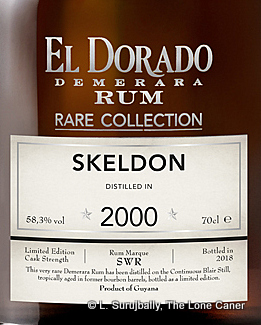 Its standout aspect was how smooth it came across when tasted. As with the Albion we looked at before, the rum didn’t profile like anywhere near its true strength, was warm and firm and tasty, trending a bit towards being over-oaked and ever-so-slightly too tannic. But those powerful notes of unsweetened cooking chocolate, creme brulee, caramel, dulce de leche, molasses and cumin mitigated the wooden bite and provided a solid counterpoint into which subtler marzipan and mint-chocolate hints could be occasionally noticed, flitting quietly in and out. The finish continued these aspects while gradually fading out, and with some patience and concentration, port-flavoured tobacco, brown sugar and cumin could be discerned.
Its standout aspect was how smooth it came across when tasted. As with the Albion we looked at before, the rum didn’t profile like anywhere near its true strength, was warm and firm and tasty, trending a bit towards being over-oaked and ever-so-slightly too tannic. But those powerful notes of unsweetened cooking chocolate, creme brulee, caramel, dulce de leche, molasses and cumin mitigated the wooden bite and provided a solid counterpoint into which subtler marzipan and mint-chocolate hints could be occasionally noticed, flitting quietly in and out. The finish continued these aspects while gradually fading out, and with some patience and concentration, port-flavoured tobacco, brown sugar and cumin could be discerned.
Is it like the more famous Velier Skeldons I’ve tried? Yes…and no. There were differences, as is inevitable over such a span of years. What is important that the rum is a good one, noses well, tastes better, and its real failing may not be how it drinks, but how much it costs relative to other Demerara rums made by the independents…because really, not many can afford this kind of rum, and DDL’s dosage reputation would hinder easy acceptance of such a pricey spirit on its merits (a problem Velier would likely not have). In any event, there are few, if any, alive now who could even tell you what an “original” Skeldon rum tasted like, given that so much time has flowed past, that the distillery was closed so long ago, and that Skeldon’s distillery output even then was folded into other companies’ blends (remember, estate- and still-specific branding is a very recent phenomenon).
What is a quiet miracle, though, is that DDL managed to adhere with such fidelity to the Skeldon profile map (as currently understood) that I’m not sure I could pick the three SWR rums apart from each other if tried blind – though I think the thick richness of the multi-decade ageing of the 1973 and 1978 might give them away. That is quite an achievement for the 2000 DDL incarnation, and allows many new rum aficionados who want to know what the hooplah over Skeldon is about, to get an inkling of why there’s a fuss at all.
(#691)(87/100)
Other Notes
- In a situation that does not surprise me in the slightest, neither Release 2 nor Release 3 Rares are listed on El Dorado’s own website.
- That “Blair” still reference has caused some confusion, but I’m reasonably confident it’s the French Savalle continuous still brought over from Blairmont estate to Uitvlught back in the 1960s and to Diamond in late 1990s/early 2000s.
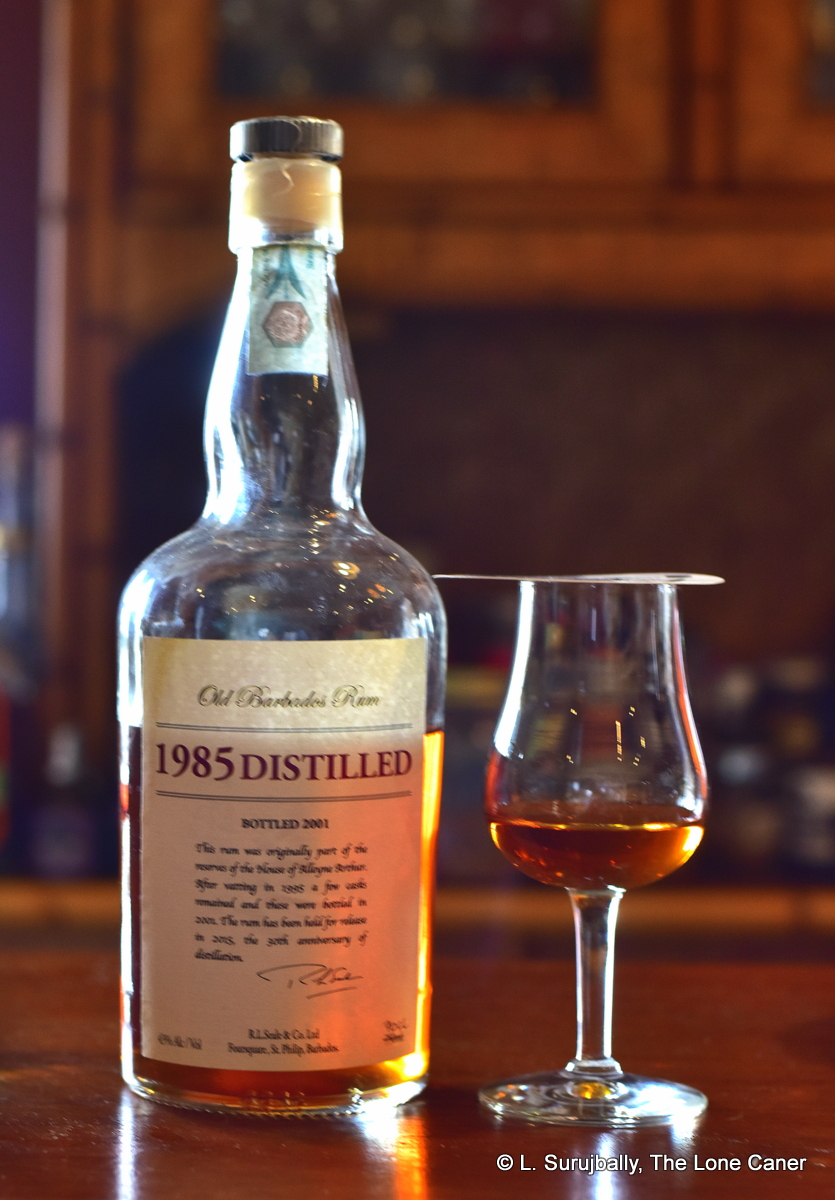 This is a rum that has become a grail for many: it just does not seem to be easily available, the price keeps going up (it’s listed around €300 in some online shops and I’ve seen it auctioned for twice that amount), and of course (drum roll, please) it’s released by Richard Seale. Put this all together and you can see why it is pursued with such slack-jawed drooling relentlessness by all those who worship at the shrine of Foursquare and know all the releases by their date of birth and first names.
This is a rum that has become a grail for many: it just does not seem to be easily available, the price keeps going up (it’s listed around €300 in some online shops and I’ve seen it auctioned for twice that amount), and of course (drum roll, please) it’s released by Richard Seale. Put this all together and you can see why it is pursued with such slack-jawed drooling relentlessness by all those who worship at the shrine of Foursquare and know all the releases by their date of birth and first names.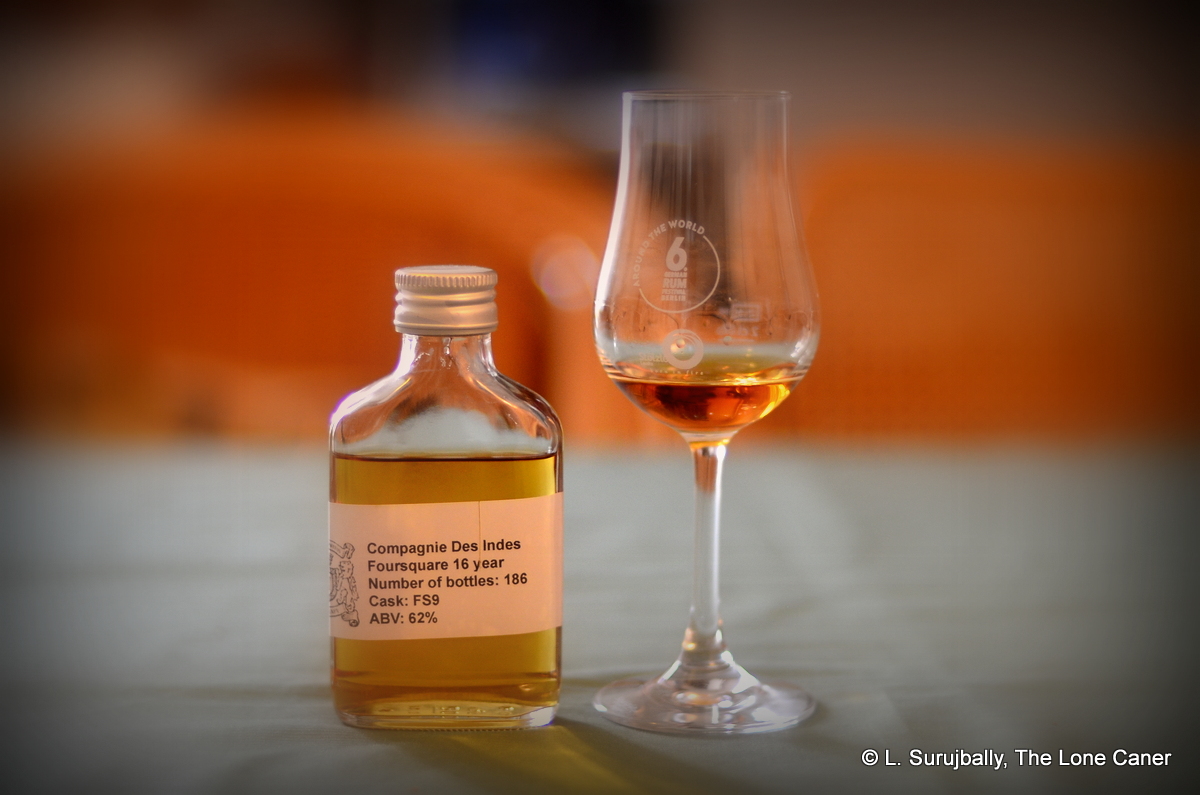
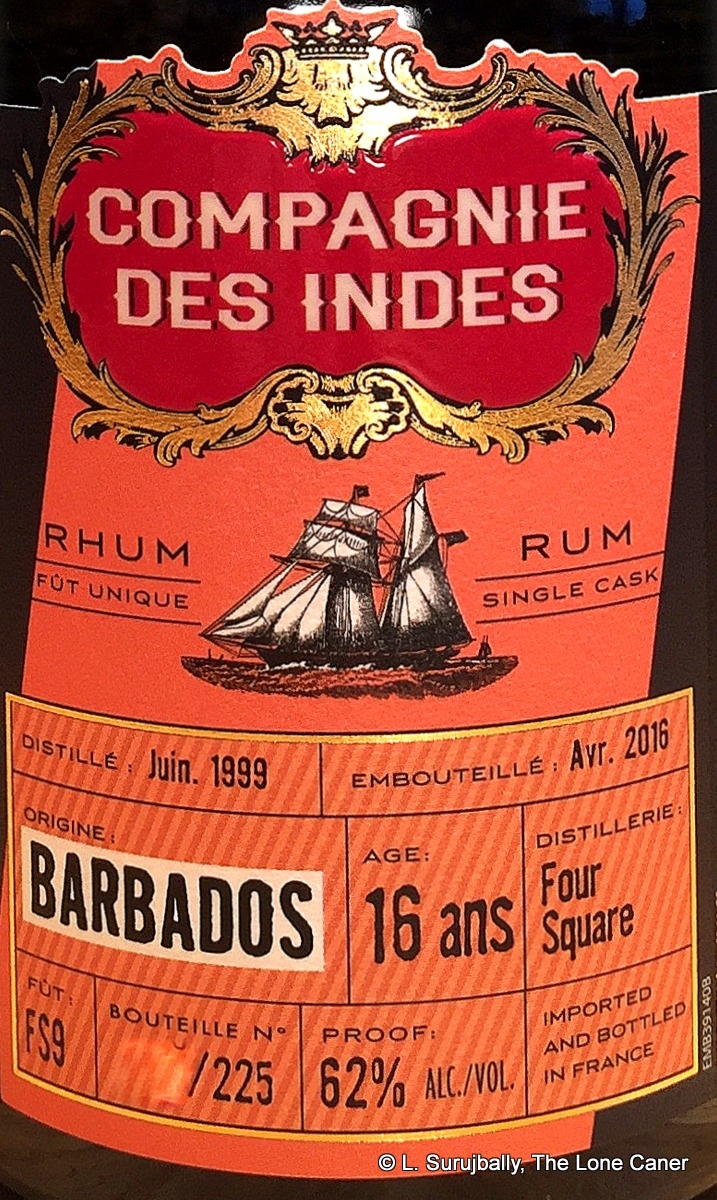 I don’t have any other observations to make, so let’s jump right in without further ado. Nose first – in a word, luscious. Although there are some salty hints to begin with, the overwhelming initial smells are of ripe black grapes, prunes, honey, and plums, with some flambeed bananas and brown sugar coming up right behind. The heat and bite of a 62% strength is very well controlled, and it presents as firm and strong without any bitchiness. After leaving it to open a few minutes, there are some fainter aromas of red/black olives, not too salty, as well as the bitter astringency of very strong black tea, and oak, mellowed by the softness of a musky caramel and vanilla, plus a sprinkling of herbs and maybe cinnamon. So quite a bit going on in there, and well worth taking one’s time with and not rushing to taste.
I don’t have any other observations to make, so let’s jump right in without further ado. Nose first – in a word, luscious. Although there are some salty hints to begin with, the overwhelming initial smells are of ripe black grapes, prunes, honey, and plums, with some flambeed bananas and brown sugar coming up right behind. The heat and bite of a 62% strength is very well controlled, and it presents as firm and strong without any bitchiness. After leaving it to open a few minutes, there are some fainter aromas of red/black olives, not too salty, as well as the bitter astringency of very strong black tea, and oak, mellowed by the softness of a musky caramel and vanilla, plus a sprinkling of herbs and maybe cinnamon. So quite a bit going on in there, and well worth taking one’s time with and not rushing to taste. 2014 was both too late and a bad year for those who started to wake up and realize that Velier’s Demerara rums were something special, because by then the positive reviews had started coming out the door, the prices began their inexorable rise, and, though we did not know it, it would mark the last issuance of any
2014 was both too late and a bad year for those who started to wake up and realize that Velier’s Demerara rums were something special, because by then the positive reviews had started coming out the door, the prices began their inexorable rise, and, though we did not know it, it would mark the last issuance of any 
 Knowing the Demerara rum profiles as well as I do, and having tried so many of them, these days I treat them all like wines from a particular chateau…or like James Bond movies: I smile fondly at the familiar, and look with interest for variations. Here that was the way to go. The nose suggested an almost woody men’s cologne: pencil shavings, some rubber and sawdust a la PM, and then the flowery notes of a bull squishing happily way in the fruit bazaar. It was sweet, fruity, dark, intense and had a bedrock of caramel, molasses, toffee, coffee, with a great background of strawberry ice cream, vanilla, licorice and ripe yellow mango slices so soft they drip juice. The balance between the two stills’ output was definitely a cut above the ordinary.
Knowing the Demerara rum profiles as well as I do, and having tried so many of them, these days I treat them all like wines from a particular chateau…or like James Bond movies: I smile fondly at the familiar, and look with interest for variations. Here that was the way to go. The nose suggested an almost woody men’s cologne: pencil shavings, some rubber and sawdust a la PM, and then the flowery notes of a bull squishing happily way in the fruit bazaar. It was sweet, fruity, dark, intense and had a bedrock of caramel, molasses, toffee, coffee, with a great background of strawberry ice cream, vanilla, licorice and ripe yellow mango slices so soft they drip juice. The balance between the two stills’ output was definitely a cut above the ordinary.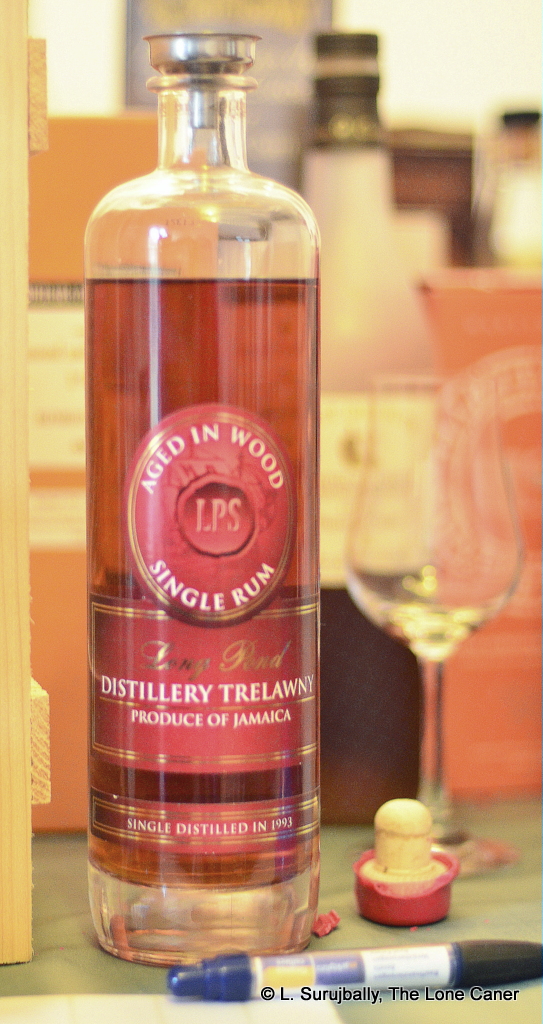 Until
Until 
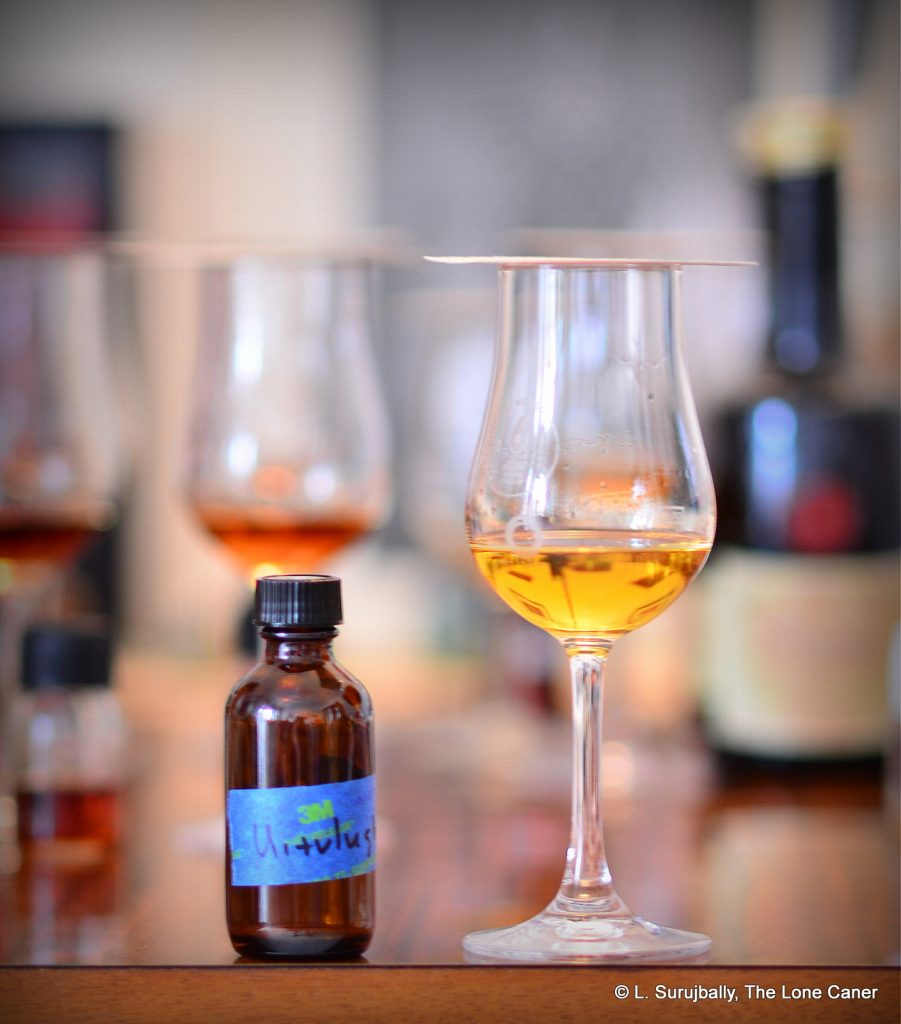
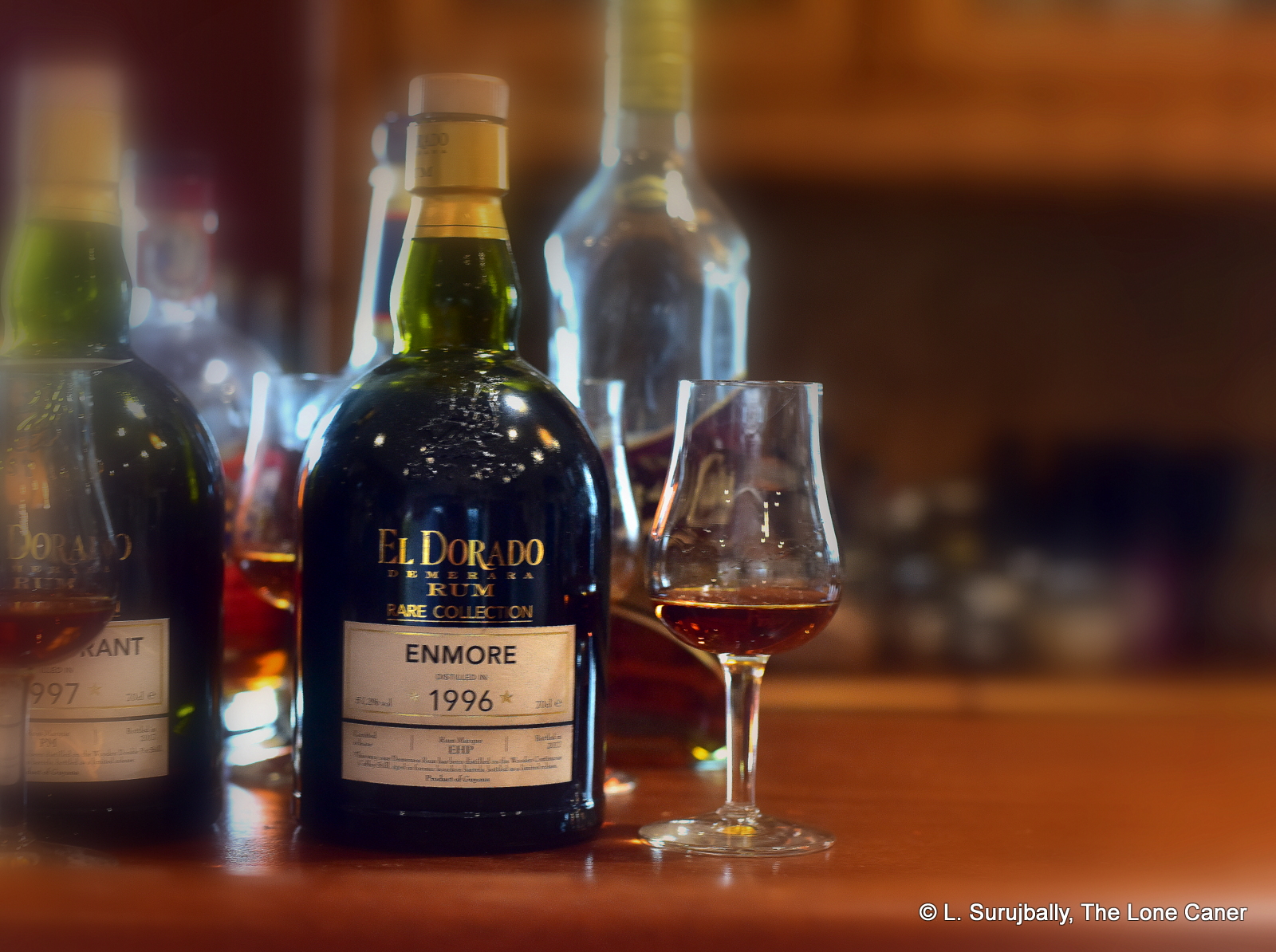

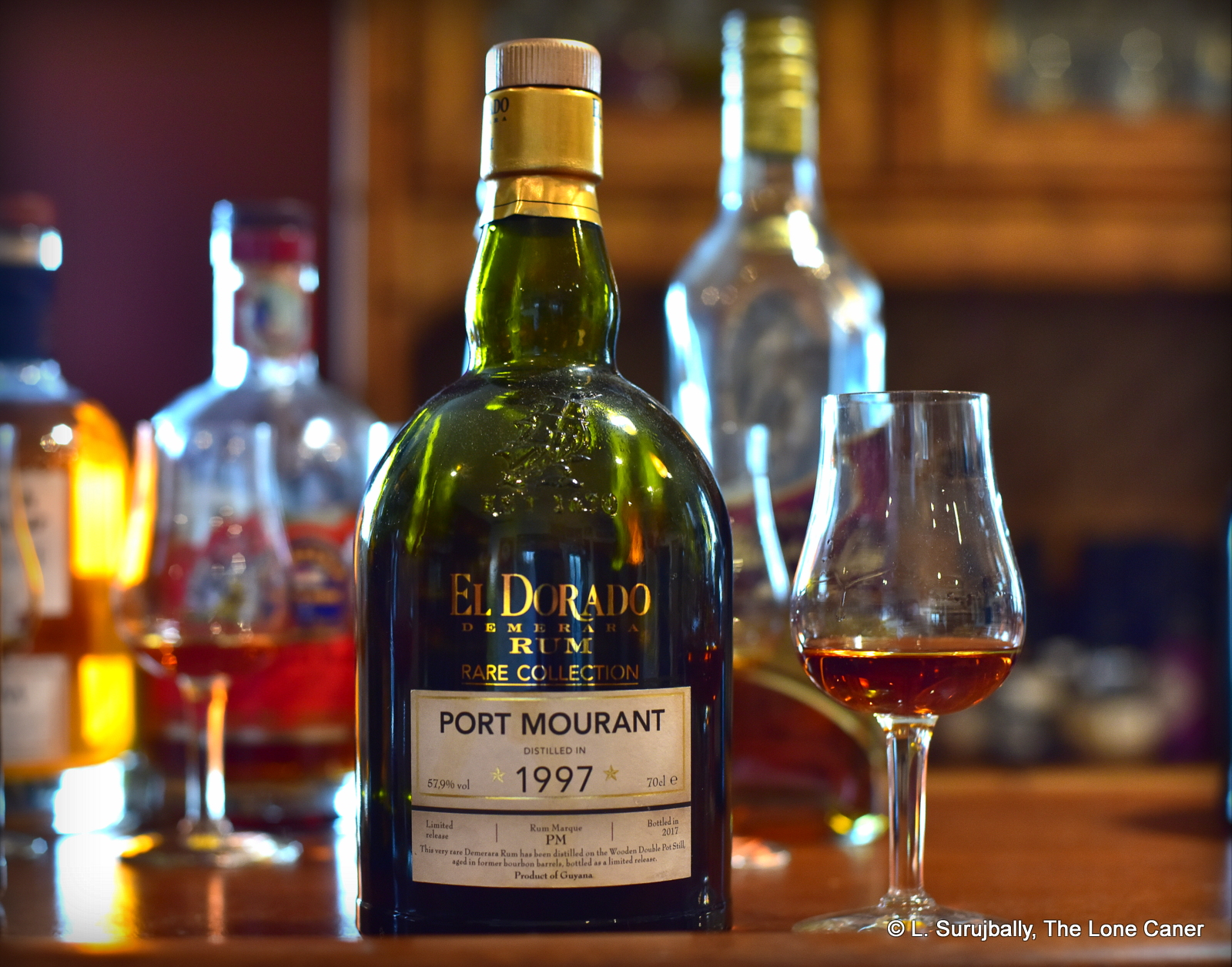
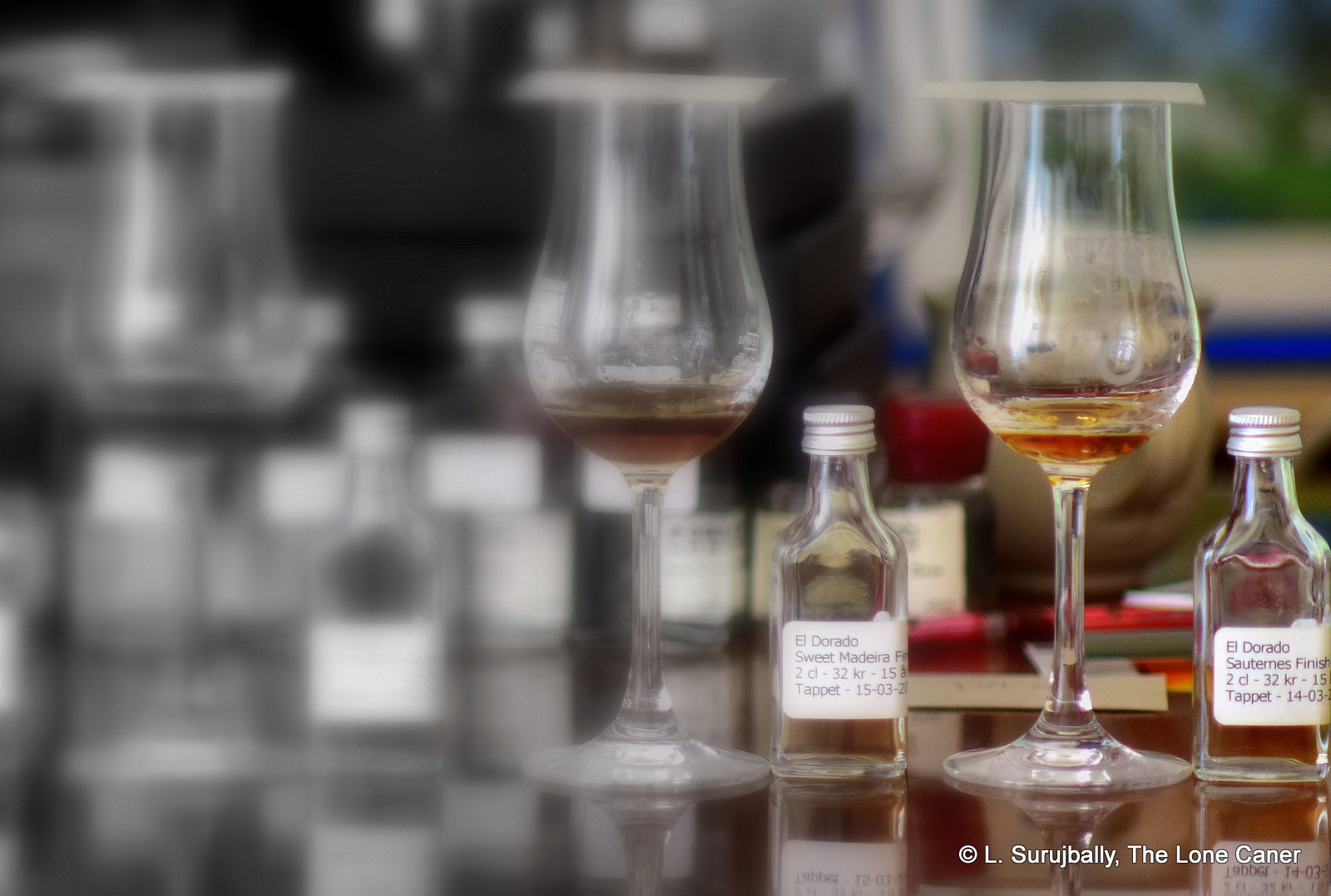
 Nose – In a subtle way this is different from the others. It opens with aromatic tobacco, white almond-stuffed chocolate and nail polish before remembering what it’s supposed to be and retreating to the standard profile of salty caramel, molasses, vanilla, cherries, raisins, lemon peel and oak, quite a bit of oak, all rather sere.
Nose – In a subtle way this is different from the others. It opens with aromatic tobacco, white almond-stuffed chocolate and nail polish before remembering what it’s supposed to be and retreating to the standard profile of salty caramel, molasses, vanilla, cherries, raisins, lemon peel and oak, quite a bit of oak, all rather sere.
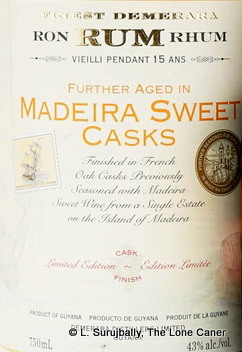 Nose – Leaving aside a slight sweetish note (which I suppose is to be expected, though still not entirely welcome), it noses relatively darker and richer and fruitier than just about all the others except the “Dry”…within the limits of its strength and mild adulteration. Peaches, raisins, cinnamon, cloves, caramel, peanut butter, cherries in syrup and candied oranges, even a little bitter chocolate. It’s all rather delicate, but quite pleasant.
Nose – Leaving aside a slight sweetish note (which I suppose is to be expected, though still not entirely welcome), it noses relatively darker and richer and fruitier than just about all the others except the “Dry”…within the limits of its strength and mild adulteration. Peaches, raisins, cinnamon, cloves, caramel, peanut butter, cherries in syrup and candied oranges, even a little bitter chocolate. It’s all rather delicate, but quite pleasant.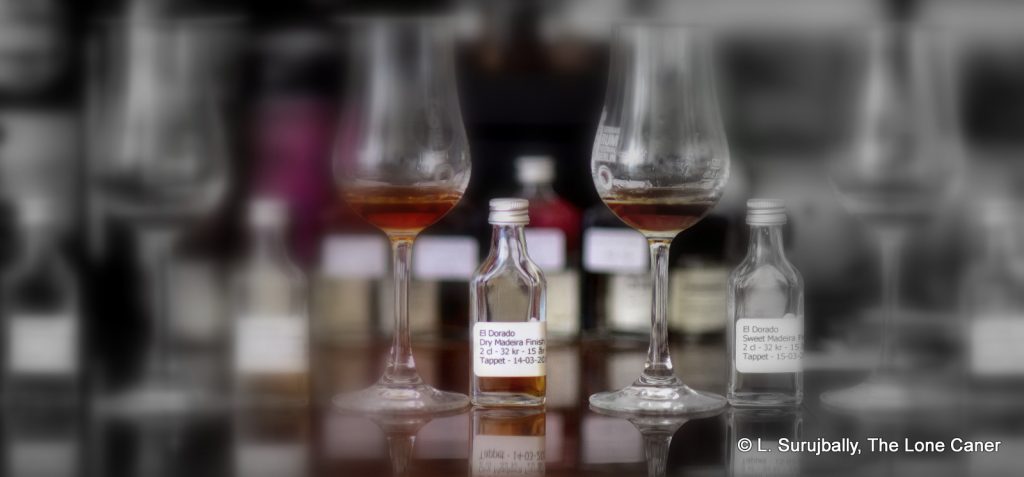

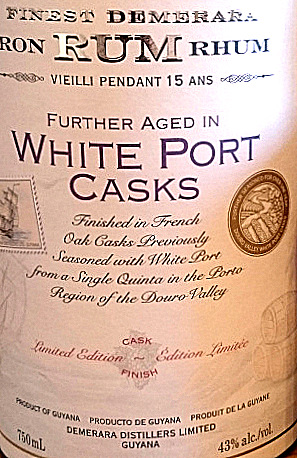 Nose – At first there didn’t seem to be much of anything there, it was so mild as to be lightly flavoured alcohol. But after some minutes it got into gear and revved up some, with a solid core of light brown sugar, molasses, salt caramel, some sweet soya. Not much deep fruitiness here, just light grapefruit, bananas and nuttiness, and sweet white chocolate.
Nose – At first there didn’t seem to be much of anything there, it was so mild as to be lightly flavoured alcohol. But after some minutes it got into gear and revved up some, with a solid core of light brown sugar, molasses, salt caramel, some sweet soya. Not much deep fruitiness here, just light grapefruit, bananas and nuttiness, and sweet white chocolate.
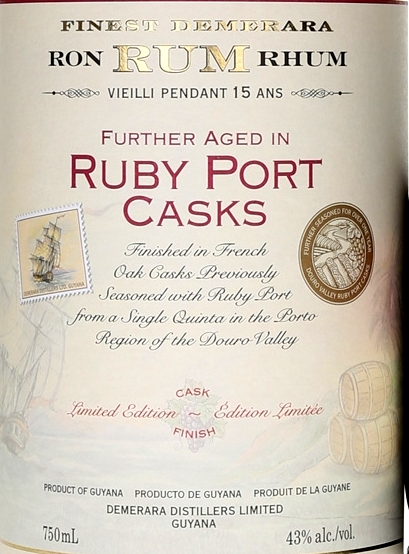 Nose – This has a light, sweet, almost delicate series of smells. There are acetones, flowers and some faint medicinal, varnish and glue aromas floating around (I liked those – they added something different), and initially the rum noses as surprisingly dry (another point I enjoyed). These then morph gradually into a more fruity melange – tinned cherries in syrup, ripe pears, pineapples, watermelons – while remaining quite crisp. It also hinted at salted caramel, crunchy peanut butter, breakfast spices and a little brine, and the balance among all these seemingly competing elements is handled really well.
Nose – This has a light, sweet, almost delicate series of smells. There are acetones, flowers and some faint medicinal, varnish and glue aromas floating around (I liked those – they added something different), and initially the rum noses as surprisingly dry (another point I enjoyed). These then morph gradually into a more fruity melange – tinned cherries in syrup, ripe pears, pineapples, watermelons – while remaining quite crisp. It also hinted at salted caramel, crunchy peanut butter, breakfast spices and a little brine, and the balance among all these seemingly competing elements is handled really well.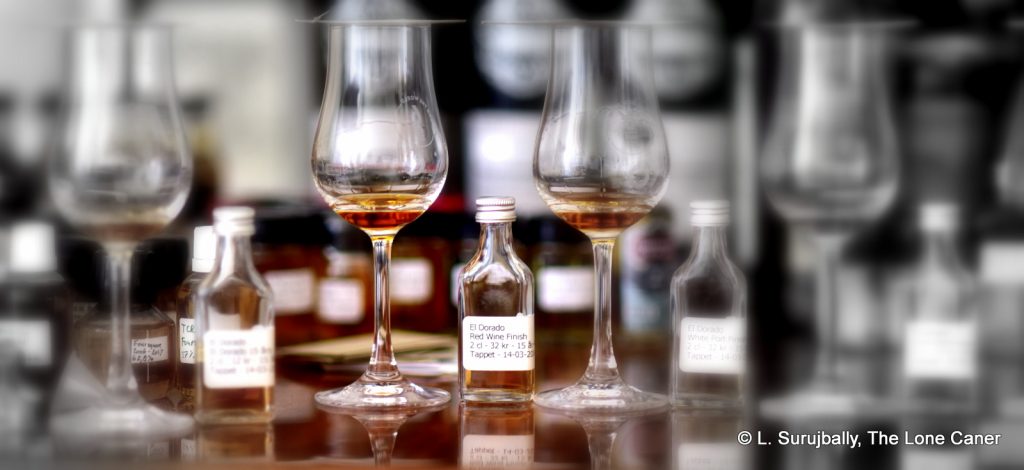
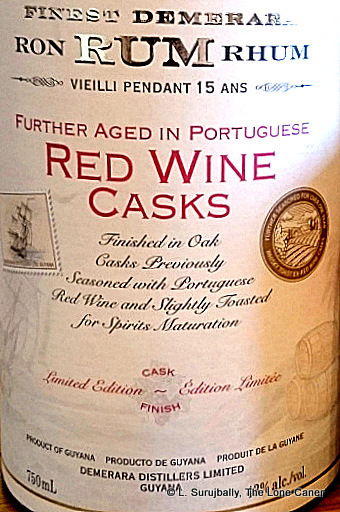 Nose – Somewhat dry and redolent of sawdust, accompanied by delicate flowers an acetones. Quite solid and lightly sweet, and deserves to be left to stand for a while, because after some minutes the molasses, caramel and light licorice notes characteristic of the line begin to make themselves felt, and are then in their turn dethroned by a deep fruitiness of ripe cherries, blackcurrants, plums, raisins and black grapes almost ready to spoil. In the background there’s some leather and citrus, neither strong enough to make any kind of serious impression.
Nose – Somewhat dry and redolent of sawdust, accompanied by delicate flowers an acetones. Quite solid and lightly sweet, and deserves to be left to stand for a while, because after some minutes the molasses, caramel and light licorice notes characteristic of the line begin to make themselves felt, and are then in their turn dethroned by a deep fruitiness of ripe cherries, blackcurrants, plums, raisins and black grapes almost ready to spoil. In the background there’s some leather and citrus, neither strong enough to make any kind of serious impression.
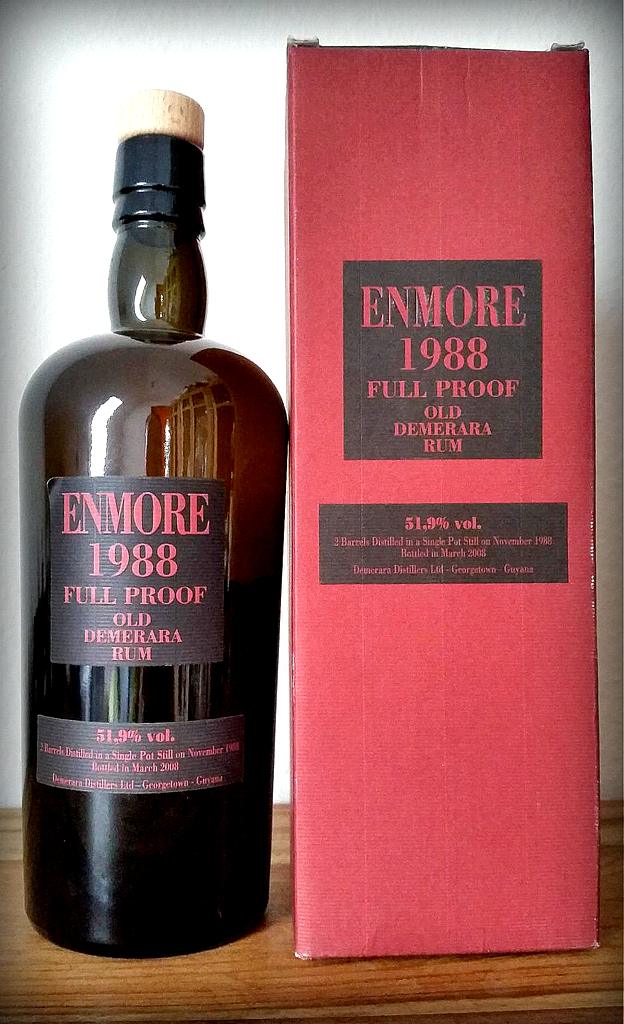
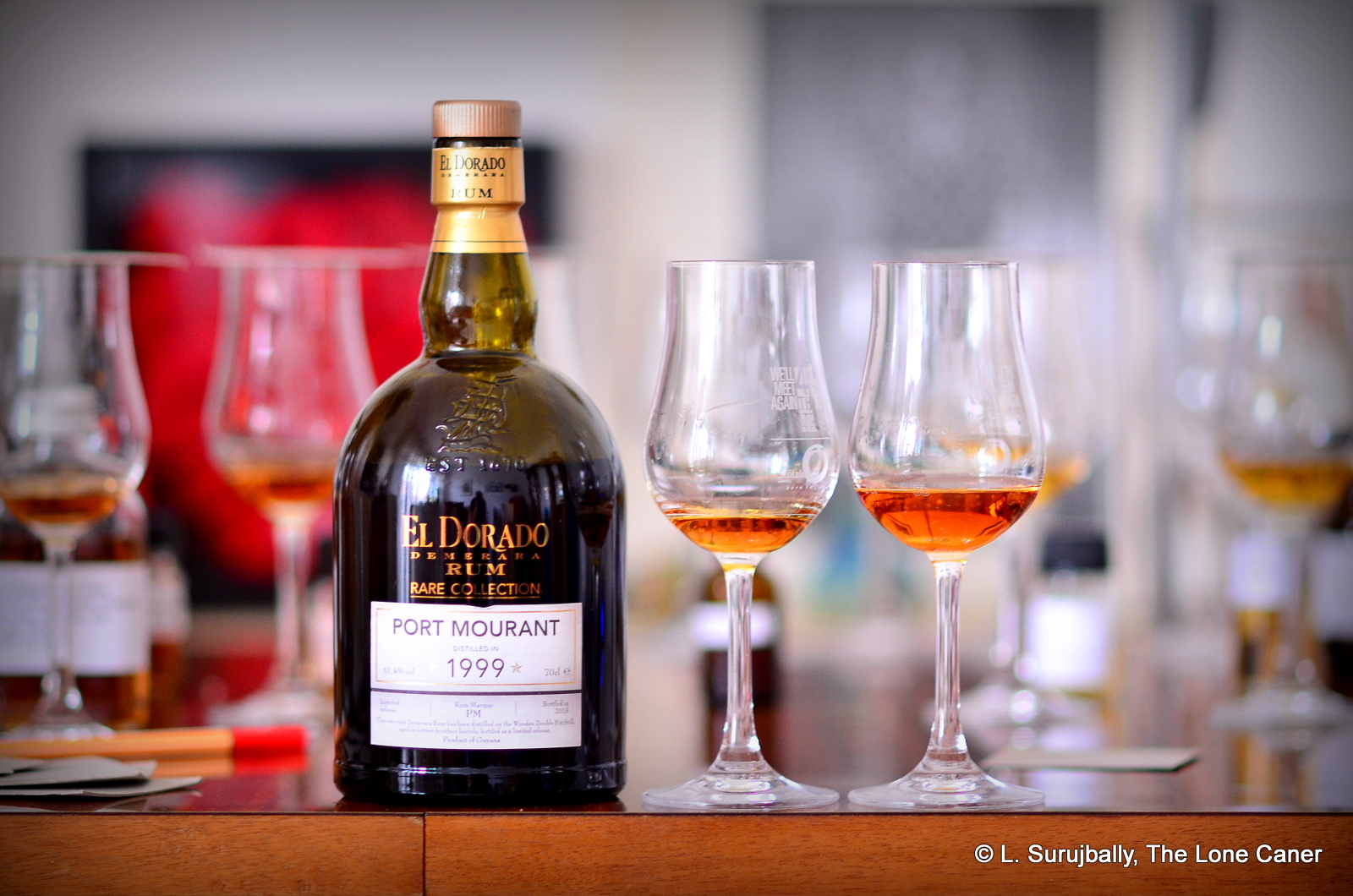
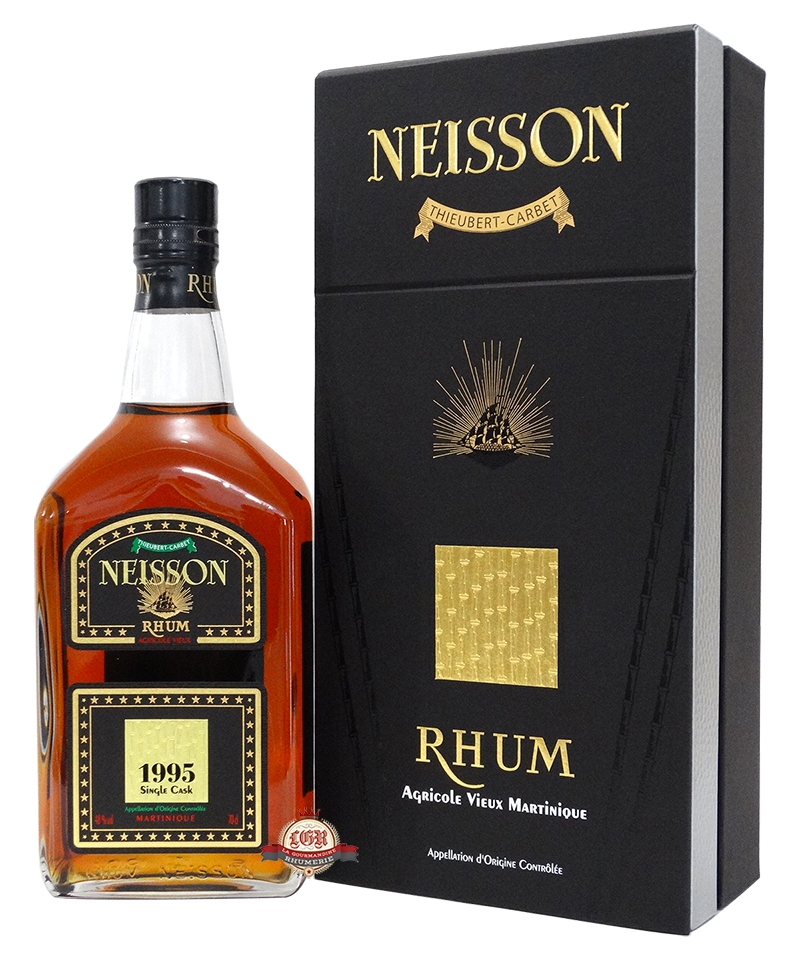 Rumaniacs Review #071 | 0484
Rumaniacs Review #071 | 0484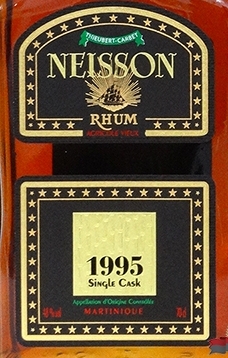 Palate – Thrumming and deeply vibrant rhum, one wonders how they wrung such depth out of a “mere” 48% – however, I’m not complaining. Dark and hot black tea. Ripe apricots, overripe mangoes, honey, cherries, wound about and through with citrus peel. Also some anise, coca cola (odd, but there you are). Dill, sage, a flirt of mint, grass, a faint wine-y tone and yes, there’s a whiff of chocolate as well.
Palate – Thrumming and deeply vibrant rhum, one wonders how they wrung such depth out of a “mere” 48% – however, I’m not complaining. Dark and hot black tea. Ripe apricots, overripe mangoes, honey, cherries, wound about and through with citrus peel. Also some anise, coca cola (odd, but there you are). Dill, sage, a flirt of mint, grass, a faint wine-y tone and yes, there’s a whiff of chocolate as well.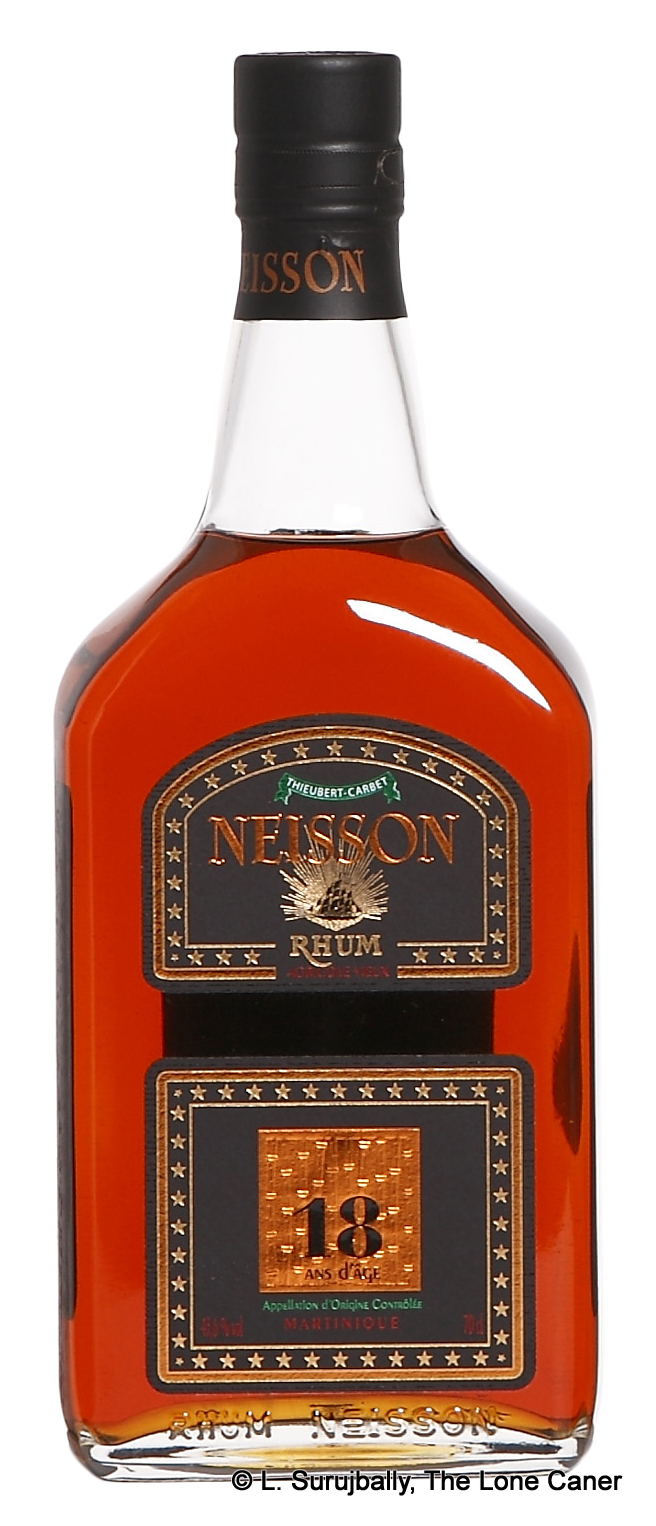 Rumaniacs Review #070 | 0482
Rumaniacs Review #070 | 0482